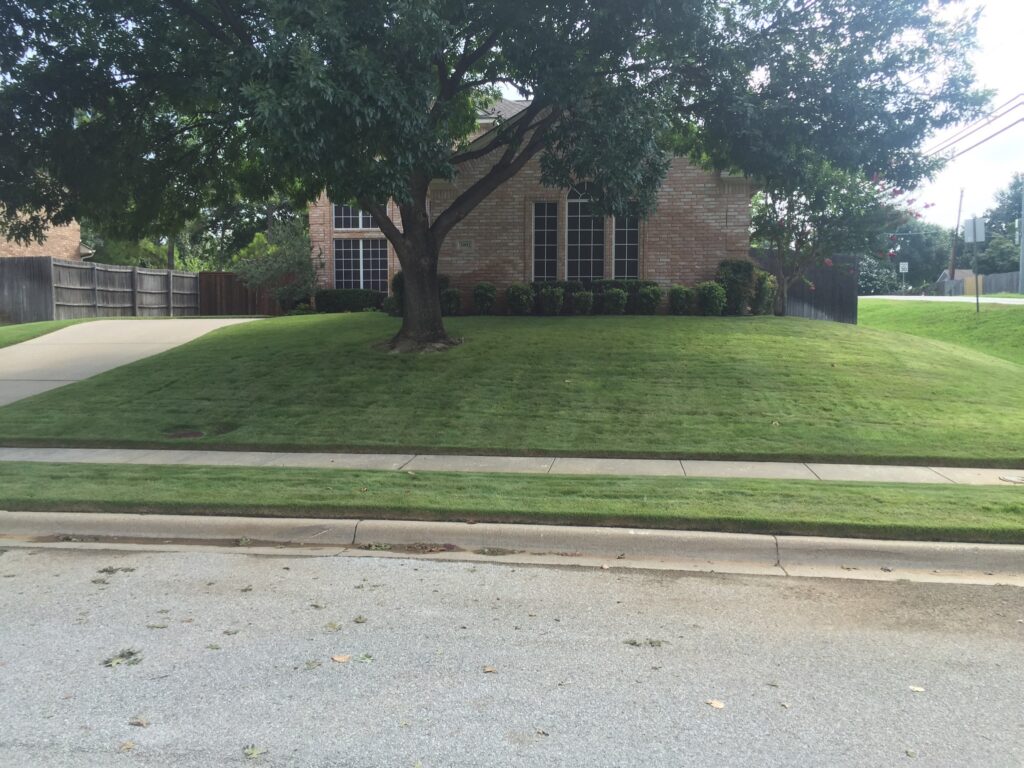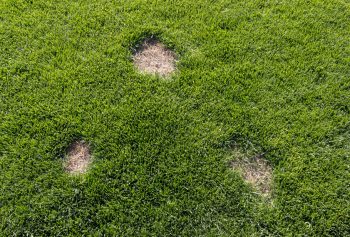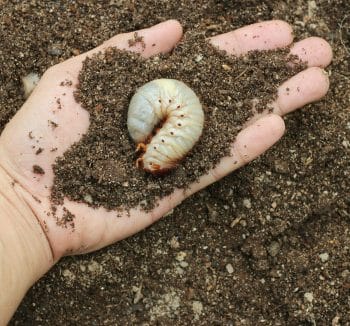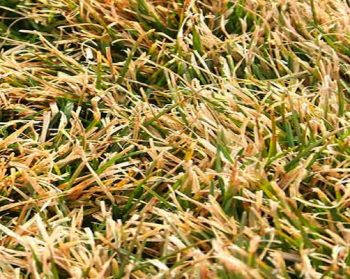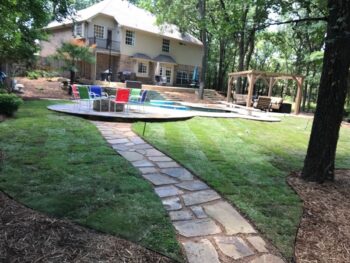 Growing grass in shady areas can be tricky because even shade-resistant grasses need at least 4 hours of daily sunlight. Everyone wants a nice, shady backyard on a hot summer day.
Growing grass in shady areas can be tricky because even shade-resistant grasses need at least 4 hours of daily sunlight. Everyone wants a nice, shady backyard on a hot summer day.
Many people buy houses with trees and big shrubs or they decide to plant them on their own. The issue is that as these trees and shrubs grow and mature, the amount of shade they provide also increases.
Which is great at first, but over time will lead to damaged, thinned out turfgrass. The other area that too much shade typically becomes a problem is the narrow, shady area between two houses.
Luckily, there are shade-tolerant, cool-season and warm-season grasses that are able to survive with partially shady conditions. Each type has its own benefits.
Shade-tolerant grasses are a commodity because they’re able to grow with minimal sun, while still offering the same benefits as other turfgrasses. Read on to discover which type of shade-tolerant turfgrass best fits your needs.
Shade-tolerant turfgrasses:
- St. Augustine
- Zoysia
- Perennial Ryegrass
- Bluegrass
St. Augustine
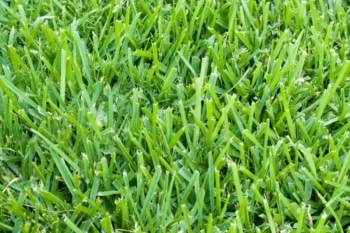
St. Augustine grass is the number one choice in North Texas for shade-tolerant turfgrass. If your yard is too shaded for St. Augustine to thrive, it is too shady for any shade-tolerant, warm-season grass to grow. This grass has a moderate level of maintenance and grows in dense, which helps with weed control.
There are some cultivars of St. Augustine that are known to be more shade-resistant than others. Palmetto is one of those types. It is sold as plugs or sod. Palmetto flourishes in both sun and shade and has a bright, lively color.
There is a new St. Augustine cultivar recently developed by Texas A&M AgriLife Research called Cobalt. It is said to be the most drought-tolerant of all the types of St. Augustine. It can be grown in both residential and commercial properties.
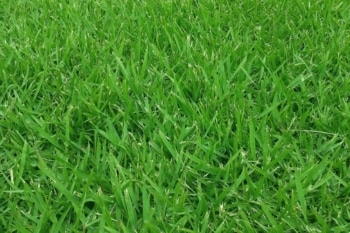
Zoysia
Next in line for a turfgrass that can withstand some partial shade is Zoysia. It is not as shade-tolerant as St. Augustine, but definitely will fare better in shade than any Bermuda or Buffalo grasses.
Zoysia requires minimal to moderate maintenance and very durable. It grows in thick and has a very vibrant shade of green. Because the roots develop very deep, it conserves water very efficiently.
Perennial Ryegrass
Perennial ryegrass is a cool-season turfgrass that is often used on sports fields during winter to provide the rich, green color that spectators are used to seeing. This also means that it can obviously, withstand heavy foot traffic.
When this grass is mixed with tall fescue, bluegrass, or ryegrass, it is incredibly shade-tolerant. Unfortunately, it does not hold up well in hot or dry conditions, so it is not often put down in Texas.
Texas Bluegrass
Texas bluegrass is a combination of Kentucky bluegrass grown with native Texas bluegrass. This type of turfgrass is shade-resistant, but will not survive in an area with heavy foot traffic.
Studies have shown that Texas bluegrass performs better than Kentucky bluegrass in shady conditions. It is also drought and heat tolerant.
Conclusion
Choosing the right type of grass will depend on your specific needs and yard conditions. Irrigation is one of the most important factors when it comes to lawn care. This is even more crucial for shade-tolerant grass types because their root systems are weakened due to lack of sunlight.
There are options available if you are looking for a turfgrass that will withstand shady conditions. If you are a Texas homeowner, one of the St. Augustine varieties is your best bet.

